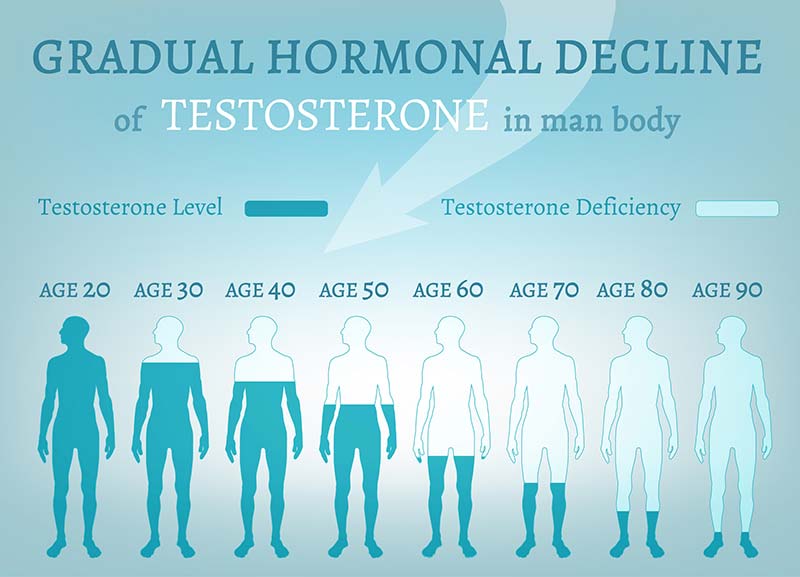How to Treat Low Testosterone Levels
December 2018
 Testosterone is a hormone that is produced in the man’s testicles that is primarily associated with sperm production as well as sex drive that gradually increases with puberty. Testosterone plays a vital role in a man’s life other than sex drive and sperm production though. Testosterone is also linked to how a man stores fat, a man’s mood as well as how much muscle mass a man can produce. Men’s testosterone levels gradually increase once they start to begin puberty and start to taper off the older they get; typically after the age of 30. Yet, there are a big portion of population that have the condition called Hypogonadism (insufficient testosterone production unrelated to age). But what happens when a man’s testosterone levels either starts to decrease before the age of 30 or if they’re over the age of 30 but want to keep their testosterone levels as optimal as possible? The best recommended advice is to get checked by a Physician that specializes in Hormone therapy replacement and have them perform a full blood panel to check the levels of their Testosterone levels. With a full blood panel, the Physician can check if the individual’s testosterone levels are within range for their specific age group or below the range of their specific age group. If it is determined the testosterone levels are below the range for their age group, then the Physician can determine Low Testosterone therapy treatment methods to help optimize their testosterones.
Testosterone is a hormone that is produced in the man’s testicles that is primarily associated with sperm production as well as sex drive that gradually increases with puberty. Testosterone plays a vital role in a man’s life other than sex drive and sperm production though. Testosterone is also linked to how a man stores fat, a man’s mood as well as how much muscle mass a man can produce. Men’s testosterone levels gradually increase once they start to begin puberty and start to taper off the older they get; typically after the age of 30. Yet, there are a big portion of population that have the condition called Hypogonadism (insufficient testosterone production unrelated to age). But what happens when a man’s testosterone levels either starts to decrease before the age of 30 or if they’re over the age of 30 but want to keep their testosterone levels as optimal as possible? The best recommended advice is to get checked by a Physician that specializes in Hormone therapy replacement and have them perform a full blood panel to check the levels of their Testosterone levels. With a full blood panel, the Physician can check if the individual’s testosterone levels are within range for their specific age group or below the range of their specific age group. If it is determined the testosterone levels are below the range for their age group, then the Physician can determine Low Testosterone therapy treatment methods to help optimize their testosterones.
Symptoms of low testosterone
When a man experiences low testosterone levels, he can experience many physiological and emotional changes such as decreased sex drive, increased irritability, increase in fat tissue, decrease in muscle mass, decrease in energy levels and a decrease in self-confidence.
 physician that specializes in Hormone replacement therapy. They can give you a full evaluation as well have your levels tested to determine how deficient your testosterone levels are from there prepare a customized plan of care and treatment to address all your health concerns.
physician that specializes in Hormone replacement therapy. They can give you a full evaluation as well have your levels tested to determine how deficient your testosterone levels are from there prepare a customized plan of care and treatment to address all your health concerns.


